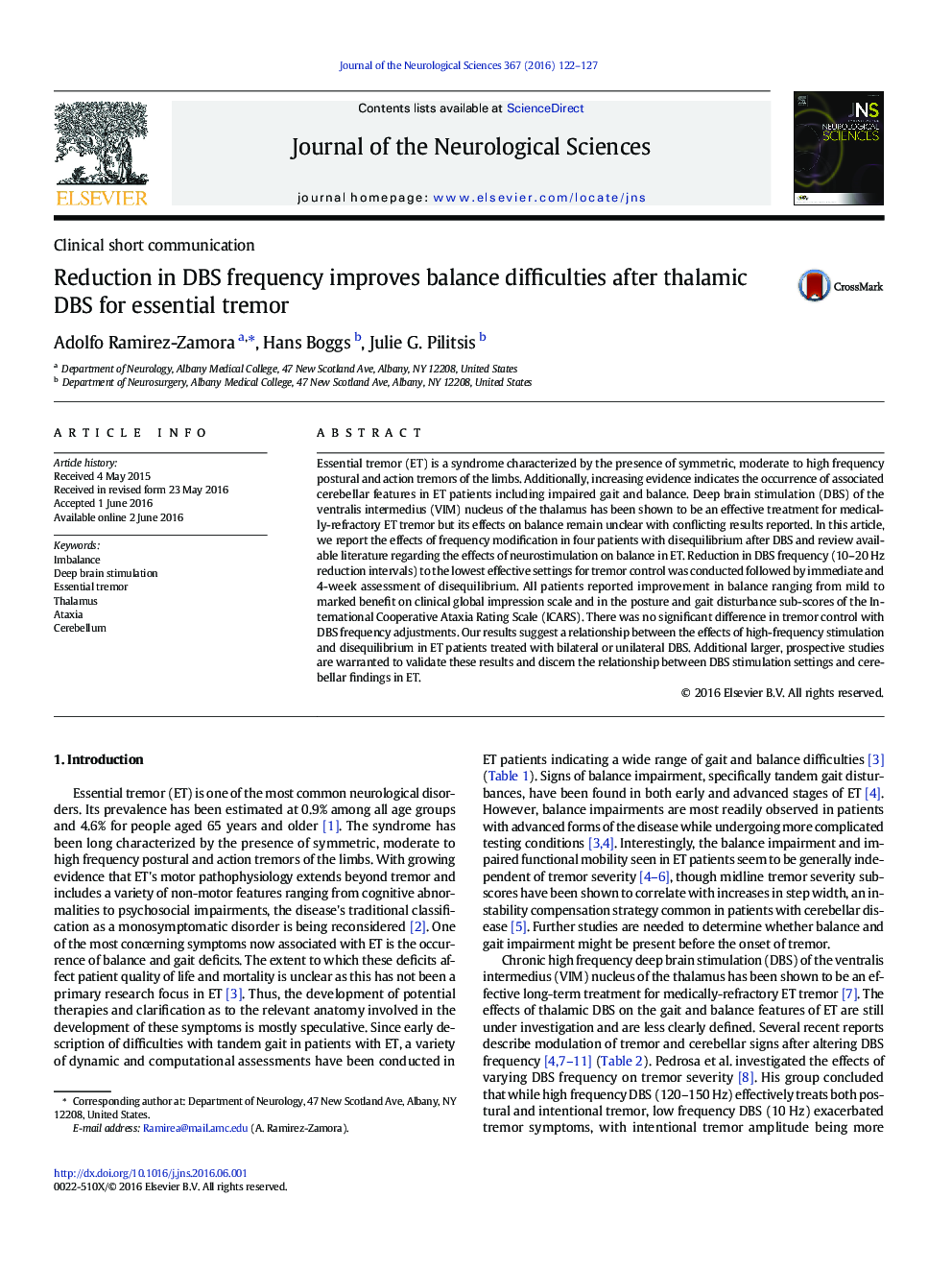| Article ID | Journal | Published Year | Pages | File Type |
|---|---|---|---|---|
| 8274221 | Journal of the Neurological Sciences | 2016 | 6 Pages |
Abstract
Essential tremor (ET) is a syndrome characterized by the presence of symmetric, moderate to high frequency postural and action tremors of the limbs. Additionally, increasing evidence indicates the occurrence of associated cerebellar features in ET patients including impaired gait and balance. Deep brain stimulation (DBS) of the ventralis intermedius (VIM) nucleus of the thalamus has been shown to be an effective treatment for medically-refractory ET tremor but its effects on balance remain unclear with conflicting results reported. In this article, we report the effects of frequency modification in four patients with disequilibrium after DBS and review available literature regarding the effects of neurostimulation on balance in ET. Reduction in DBS frequency (10-20Â Hz reduction intervals) to the lowest effective settings for tremor control was conducted followed by immediate and 4-week assessment of disequilibrium. All patients reported improvement in balance ranging from mild to marked benefit on clinical global impression scale and in the posture and gait disturbance sub-scores of the International Cooperative Ataxia Rating Scale (ICARS). There was no significant difference in tremor control with DBS frequency adjustments. Our results suggest a relationship between the effects of high-frequency stimulation and disequilibrium in ET patients treated with bilateral or unilateral DBS. Additional larger, prospective studies are warranted to validate these results and discern the relationship between DBS stimulation settings and cerebellar findings in ET.
Related Topics
Life Sciences
Biochemistry, Genetics and Molecular Biology
Ageing
Authors
Adolfo Ramirez-Zamora, Hans Boggs, Julie G. Pilitsis,
